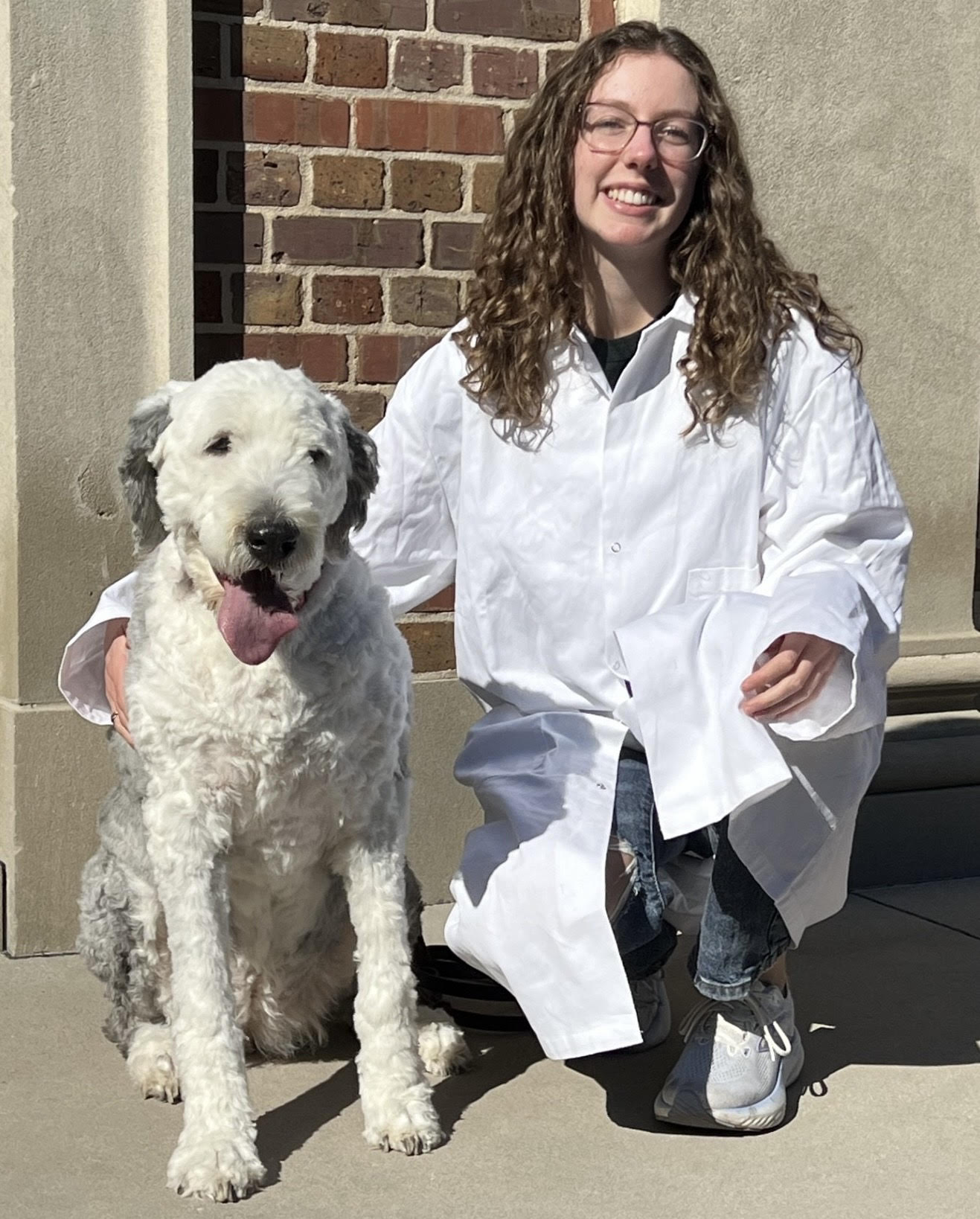A Passion for Equity Drives Sarah Rehm’s Research on the Impact of PFAS on Pets, Wildlife

Chemistry major Sarsh Rehm beside her family's Old English Sheepdog, Cassie, who was not included in her study on whether dogs exposed to high levels of PFAS are more likely to develop gallbladder mucoceles, a painful and sometimes deadly condition.
October 24, 2025 I By Dave DeFusco
Growing up in Cary, N.C., Sarah Rehm loved science for the way it explained the hidden workings of the world. Now a chemistry major at UNC-Chapel Hill, she’s turning that curiosity toward a problem that hits close to home—pollution from a group of toxic compounds known as PFAS, or forever chemicals.
PFAS are used in products like nonstick pans, waterproof clothing and firefighting foams. They don’t break down easily, so over time they’ve spread through soil, water and living organisms, including humans and animals.
“We’ve had a lot of industrial plants in North Carolina that have discharged PFAS into public drinking water,” said Rehm. “It’s a very big issue in this area.”

In the Baker Lab at UNC, Rehm studies how PFAS exposure affects both domestic and wild animals. Using an advanced analytical tool called Liquid Chromatography–Ion Mobility Spectrometry–Mass Spectrometry (LC-IMS-MS), she can detect and measure trace amounts of PFAS in complex biological samples, like animal blood and milk. Her team uses a specialized computer program to compare the chemical fingerprints they find with known PFAS standards, creating a clearer picture of contamination levels.
“Basically, each part of the instrument separates molecules in a different way by chemical moiety, size, shape and mass,” she said. “That helps us identify which PFAS are present and how much of each is there.”
One of Rehm’s main projects looks at PFAS exposure in domestic dogs. Erin Baker, an associate professor in the Department of Chemistry and Rehm’s research advisor, said Sarah is investigating whether dogs exposed to high levels of PFAS are more likely to develop gallbladder mucoceles, a painful and sometimes deadly condition.
“Sarah is extremely passionate about her research,” said Baker. “It will provide important information to veterinarians and pet owners.”
Rehm said her team has found very high concentrations of PFAS in some of these dogs. “The recommended level in human plasma that would trigger concern is 20 nanograms per milliliter,” she said, “but we’re seeing levels much higher than that in dogs. Their bodies are smaller, so that’s really alarming.”

While gallbladder mucoceles occur only in canines, gallbladder disease also affects people. “It’s interesting because PFAS are structurally similar to lipids, or fats,” said Rehm. “Since bile in the gallbladder contains lots of lipids, PFAS might accumulate there and cause harmful effects.”
She collaborates with Jody Gookin, a veterinary researcher at NC State University who studies canine gallbladder disease. Together, they hope to learn whether PFAS could be one of the missing pieces behind why some breeds and older dogs are more likely to develop these mucoceles.
Rehm is also part of an early-stage project studying wild carnivores, including lions, to see whether PFAS can be passed from mothers to offspring through milk. “It’s really cool to be working with lion samples,” she said. “We haven’t quantified those yet, but another student in our lab has found that in dolphins, PFAS can be transferred through lactation. That means very young animals could be getting high doses early in life, which is definitely concerning.”
Working with biological samples like serum and milk isn’t easy. “There are a lot of natural molecules that can interfere with the analysis,” said Rehm, “so we perform extractions to clean up the samples, and we check our accuracy against standard reference materials.”
While her work is deeply rooted in chemistry, Rehm’s academic path also reflects her double minor in environmental science and social and economic justice. “I love analytical chemistry because it’s about precise measurement,” she said, “but I also think about who’s most affected by chemical pollution. Disadvantaged communities are often hit the hardest, so it’s important to consider those impacts, too.”

